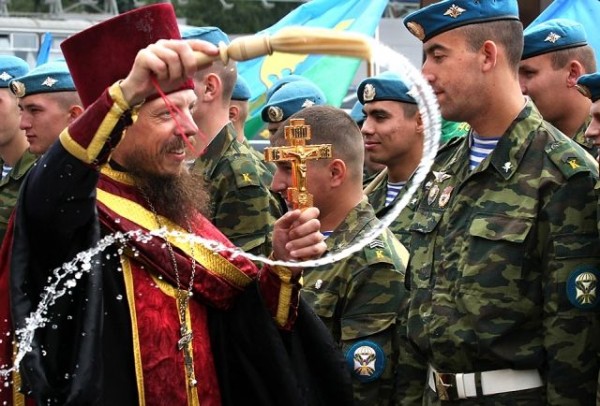
One should expect the relationship between the military and the Russian Orthodox Church to continue developing and playing a role in countering antiwar sentiments, writes Pär Gustafsson Kurki, Senior Researcher at the Swedish Defense Research Agency (FOI), in a recent report titled Apostles of Violence: The Russian Orthodox Church’s Role in Russian Militarism. Although only a minority of Russian Orthodox in the country are actually practicing, there is a high level of cultural identification with the country’s Orthodox heritage. Moreover, “the recurrence of topics in Russian media relating to the Church and religion contributes to a sense of ‘ambient faith’ in Russia,” Kurki writes, interpreting it as “a top-down ideological propaganda project.” According to the author, the state’s use of the Russian Orthodox Church for militaristic propaganda is linked to the concept of Russian spirituality (dukhovnost), which is perceived positively by many Russians. “When the state’s propagandists, such as the military clergy, associate militarism with dukhovnost, the result is a potentially higher threshold for the target population to voice antiwar sentiments.” While religion did not seem to play a very central role in daily military life, a survey published in 2010 by the Russian Ministry of Defense identified a “religious potential” among a segment of soldiers who are believers, with the junior officers presenting the highest percentage of believers in the armed forces. “It is clear that the official agenda is to use this ‘religious potential’ to strengthen the Russian military’s capability by raising soldier morale via the spiritual factor.”

Source: Pravmir (https://www.pravmir.com/number-military-chaplains-increase-russian-orthodox-church/).
In 2009, the institution of military clergy—that had been abolished in 1918—was formally restored. The training of military clergy started in 2014 at five military command colleges. While most are Russian Orthodox priests, there are also a number of Muslim and a few Buddhist chaplains. In addition, there are also priests who work through direct agreements with individual military unit commanders (as used to be the case before 2009), without an official status. In April 2023, Patriarch Kirill appointed an archpriest as Chief Military Priest for the war in Ukraine. It is known that the number of priests in the armed forces is considered to be insufficient. Recently, the Patriarch mentioned that there are currently more than 100 military chaplains in combat areas in Ukraine (where some clergymen have also lost their lives), while the Metropolitan in charge of work with the armed forces indicated that there are a total of 281 military chaplains, a number that is planned to quadruple with the adoption of a new federal law defining their status (Religion & Gesellschaft in Ost und West, February). Kurki concludes that “the Russian State relies on Orthodox spirituality-based propaganda through the military clergy because it believes that Orthodoxy can contribute to unit cohesion in the armed forces.” But the author also suggests that “a more limited function of the clergy is to suppress criticism of the war by linking a positive value (i.e., Russian spirituality) to militarism.”
(The report can be downloaded from the FOI website: https://www.foi.se/rest-api/report/FOI-R–5514–SE)